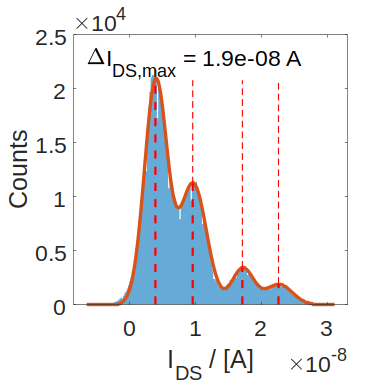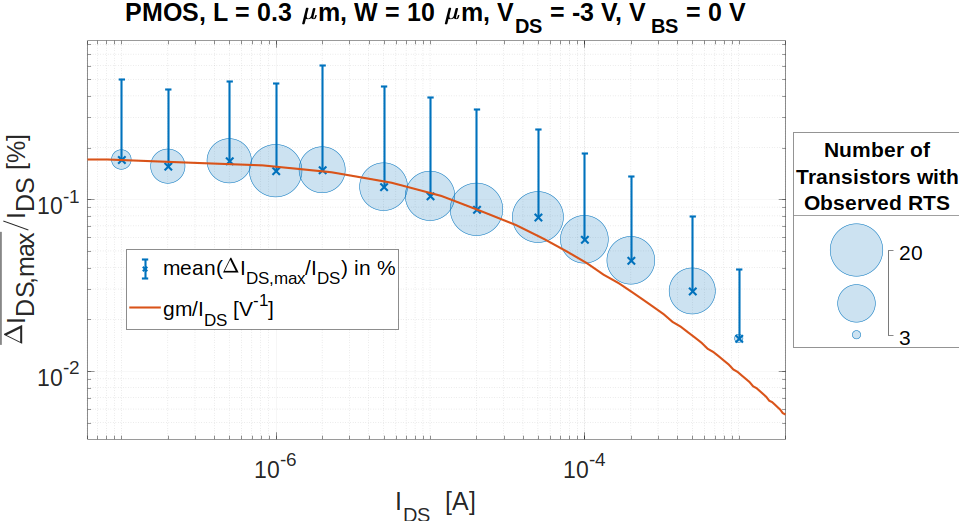 |
|
||||
BiographyFelix Johann Stampfl was born in 1994 in Austria and studied Technical Physics at the Technische Universität Graz, where he received his Diplom-Ingenieur degree (MSc equivalent) in 2023. Felix joined the Institute for Microelectronics in September 2023, where he is working towards his doctoral degree focusing on single defects in semiconductor devices while also being part of the CD-Lab for SDS team. |
|||||
Evaluation of Random Telegraph Noise in MOSFET Devices
Low-frequency (LF) noise is essential in semiconductor metal-oxide-semiconductor (MOS) transistors. Generally, the LF noise, also known as flicker noise, is inversely proportional to the frequency and is thus often referred to as 1/f noise. A substantial contributing factor to the flicker noise is RTN/RTS, short for random telegraph noise/signal. According to current knowledge, this effect occurs due to single defects in the insulating film between the gate and the body of the MOSFET, which consists of SiO2 for planar technologies or a high-k dielectric gate stack in modern devices. This cumulative response of the many defects present in transistors leads to the typically observed 1/f-like behavior. However, due to the continued downscaling of semiconductor devices, a prominent RTN effect can be the dominant noise in individual transistors. Understanding and mitigating these noise sources are crucial for enhancing the performance and reliability of semiconductor devices in various applications.
One way to characterize this phenomenon is to measure the current between the drain and source of the MOSFET at a specific operating point over time. Multiple Gaussian distributions can be observed when displaying the signal as a histogram if RTN is strongly present. The RTN amplitude can be determined by calculating the distance between the peaks, as depicted in Figure 1. For the identification of peaks in histograms, it was crucial to find an effective solution involving a sum of Gaussian distributions. This was achieved by using the Levenberg–Marquardt algorithm, which efficiently extracted parameters for each Gaussian distribution. The program reliably detected the majority of peaks, underscoring its effectiveness.
Recent investigations show that the RTN amplitude correlates with the transconductance of the transistor. This was further investigated by observing the behavior of RTN signals using a statistical approach, i.e., monitoring RTN signatures on multiple transistors. Figure 2 shows that this correlation somewhat holds for the tested device.

Fig. 1: Demonstration of the maximal RTN amplitude of a 4-level RTN.

Fig. 2: Relative mean value of the maximal RTN amplitude compared with the transconductance of the device as a function of the drain-source current, device: p‑channel MOSFET with L/W = 0.3/10 µm at VDS = 3 V and VBS = 0 V.


